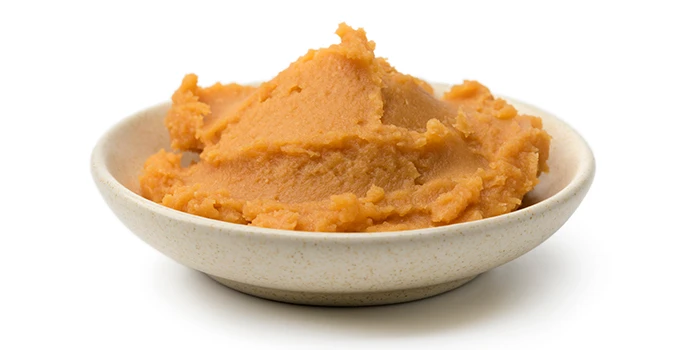Understanding Soybean Paste Miso: A Comprehensive Guide
Soybean paste miso, a traditional Japanese condiment, has gained popularity worldwide for its unique flavor and versatility in culinary applications. This article aims to provide a comprehensive guide to soybean paste miso, exploring its origins, production process, types, nutritional benefits, and various uses in cooking.

Miso paste
I. Origins of Soybean Paste Miso:
1. Ancient Roots: Tracing the history of soybean paste miso back to ancient Japan.
2. Cultural Significance: Understanding the role of miso in Japanese cuisine and traditional rituals.
II. Production Process of Soybean Paste Miso:
1. Key Ingredients: Highlighting the primary ingredients required for making miso.
2. Fermentation Process: Explaining the fermentation steps involved in miso production.
3. Variations in Fermentation: Discussing different fermentation methods and their impact on the final flavor profile.
III. Types of Soybean Paste Miso:
1. Shiro Miso (White Miso): Describing the characteristics and uses of the mildest miso variety.
2. Aka Miso (Red Miso): Exploring the robust and bold flavor of red miso and its applications.
3. Awase Miso (Mixed Miso): Discussing the blend of white and red miso, offering a balanced taste.

White miso paste
IV. Nutritional Benefits of Soybean Paste Miso:
1. Protein and Amino Acids: Highlighting the rich protein content and essential amino acids found in miso.
2. Probiotics and Digestive Health: Exploring the presence of beneficial bacteria in miso and its positive effects on digestion.
3. Vitamins and Minerals: Discussing the vitamins and minerals present in miso, such as vitamin K, manganese, and zinc.
V. Culinary Uses of Soybean Paste Miso:
1. Soup Base: Explaining how miso serves as a flavorful base for traditional Japanese soups like miso soup.
2. Marinades and Dressings: Discussing the versatility of miso in creating delicious marinades and salad dressings.
3. Flavor Enhancer: Highlighting how miso can add depth and complexity to various dishes, such as stews, stir-fries, and glazes.
VI. Comparing Soybean Paste Miso with Other Fermented Pastes:
1. Miso vs. Gochujang: Contrasting the differences between soybean paste miso and the Korean condiment gochujang.
2. Miso vs. Fermented Bean Paste: Highlighting the distinctions between miso and other fermented bean pastes from different cultures.
VII. Buying and Storing Soybean Paste Miso:
1. Choosing the Right Miso: Providing tips on selecting the appropriate miso based on flavor, color, and desired use.
2. Proper Storage: Guiding readers on how to store miso to maintain its freshness and flavor.
In conclusion, soybean paste miso is a versatile and nutritious condiment deeply rooted in Japanese culinary traditions. Its rich history, diverse types, and wide range of culinary applications make it an exciting ingredient to explore in various dishes. By understanding the origins, production process, nutritional benefits, and culinary uses of miso, you can elevate your cooking and appreciate the unique flavors this ancient condiment offers.